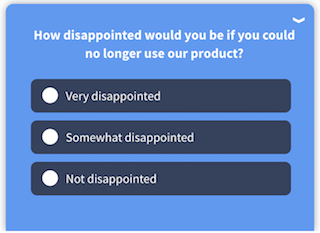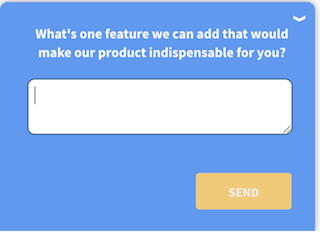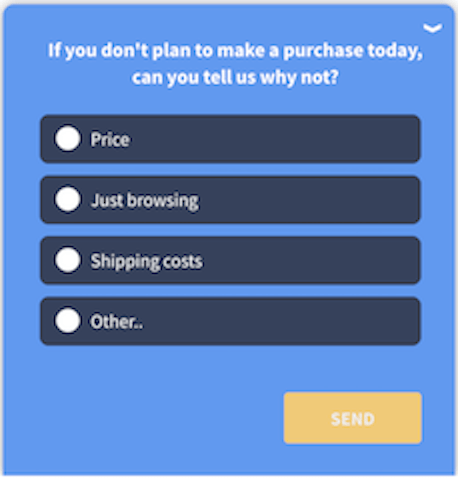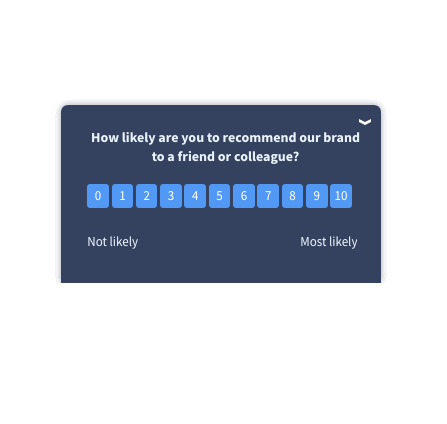Updated as of May 18, 2018
Before Instagram was Instagram, the billion dollar photo sharing app, it was Burbn, a check-in app crammed full of useless features. Users weren’t checking in, but they were using it to share photos with their friends. So the founders, Kevin Systrom and Mike Krieger, started asking why.
They went back to the drawing board to find the right market for their product. Ultimately they emerged with a slimmed down app that focused entirely on photo-sharing and left the extras aside.
Reaching product/market fit (PMF) is the goal for startups. Tapping into the right market and finding the niche for a product is vital to building a foundation for growth.
But some companies still assume they can create a good product by simply looking at the market. They rely on intuition and vision while working within a vacuum, but this ultimately is the same as guessing.
To get the PMF, asking your customers thorough questions about their motivations should be key to every aspect of your process.
If you’re not talking to customers you don’t have Product/Market Fit
About ten years ago, Microsoft CEO Steve Ballmer made headlines when he openly laughed at the idea of the iPhone. “That is the most expensive phone in the world,” he said. “And it doesn’t appeal to business customers because it doesn’t have a keyboard, which makes it not a very good email machine.”
The iPhone went on to sell over a million units in the first weekend after its launch, many to “business customers.”
Ballmer was basing his statements on the market research that was available at the time: up until that point the only cellphones that “business customers” were buying were Blackberries because, like he said, they had keyboards. He was assuming, based on these demographics, the only cell phones they would buy in the future would be similar. He was completely wrong.
Market research hinges on looking at the demographics of customers and the current product options they have. It enters into research with a hypothesis already in mind, which must then be proved or disproved. The issue with market research is that the questions that get posed lead to a limited set of biased answers, and don’t allow customers to provide feedback beyond that.
Customer development, by contrast, looks closely at what motivates customers to buy products. It questions their problems so it can offer a solution, i.e. the ultimate product. By deep-diving into customer responses, companies can get a much better look at what the market needs.
If Ballmer asked Blackberry customers if they’d want a phone without a keyboard they might’ve said no, supporting his claim. But if he had asked about their email habits and keyboard usage he might have realized that having a physical keyboard versus a digital one wouldn’t make much difference. If anything, Blackberry customers might have voiced frustration with their current phone keyboards, which can become faulty.
As Hiten Shah says in his ebook 5 Habits to Building Better Products Faster, you should always start with customers’ specific problems before finding a solution. If you act on what you think they want rather than what they really want, or if you focus on your own first-hand experiences when developing your product rather than those of your customers, you could be dooming your product from the beginning.
Two customer-centric methods for finding Product/Market Fit
There are two distinct models to building customer development and finding PMF: the Customer Development Survey and the Jobs-To-Be-Done Formula. Both are unique in how they build fit, but they also both focus on the customer.
The Customer Development Survey
Sean Ellis created the Customer Development Survey, which, he says, can help companies measure their PMF and decide whether to start scaling.
The crux of the survey is getting feedback directly from current and potential customers about your product. Only they can tell you whether you’re on the money or not. The survey asks specific questions that ultimately answer the following:
-
Who are your customers:
-
What do they do professionally?
-
How much time do they spend on the process in question?
-
-
What problems do they have:
-
What are some unmet needs they have?
-
What tasks take up the most time in their day?
-
-
What are their motivations:
-
How important is the value being delivered to them?
-
If you had a solution to this problem, how would it affect them?
-
With these answers you have a much better idea of the kind of solutions the customers you are targeting would purchase. You also more clearly understand the problems they’re facing and how they operate, leading you to better product optimization.
One crucial question to ask your current customers, though, is how they would feel if your product didn’t exist. Sean says at least 40% of your customers have to say they’d be “very disappointed” without your product for you to have a good indication of PMF. It’s still not guaranteed that you’ve reached PMF, but having a solid and loyal customer base means you’re getting close.

The Jobs-To-Be-Done Formula
The jobs-to-be-done formula is pretty straightforward: build a solution for a problem your customers have. But the key part is knowing that your customers actually have that problem. You should understand the job that needs to be done in your customer’s context, not yours.
To start working through the formula, you have to fill in the blanks of this simple statement: When ______, I want to ______, so I can ______.
You are filling it in as a customer yourself, getting into the minds of those you’re selling to. This keeps the process focused on what motivates customers. You are trying to find their problem and determine the solution.
Instagram’s founders, before they pivoted, might have filled in the blanks like this “When I go to a bar, I want to tell my friends where I went, so I can include them in the experience.”
Instagram users, by contrast, might fill in the blanks like, “When I go anywhere, I want to be able to share photos with my friends, so I can include them in the experience.”
The two statements are similar in feeling but different in content. Instagram solved this disparity by asking whether they were addressing their customers’ real job-to-be-done when they saw their photo-sharing feature being used more often than their check-in. This is how they found their PMF and built a customer-centric product.

Ask Your Customers Directly What They Need From Your Product
The best way to find out what your customers want from your product is to ask them.
Cindy Alvarez, who wrote Lean Customer Development, advocates for conducting hundreds of one-on-one interviews to really get to know your customers. But this takes time, money, and resources. Instead, survey tools like Qualaroo can return answers right away at multiple points in your product’s lifecycle.

Even when customers don’t buy your product or when they cancel, you can learn a lot by asking them why. Exit surveys are extremely useful in locating pain points and can even provide instant solutions that might ease customers back. For example, if they say price is an issue when deciding whether to make a purchase, you can offer them a discount code instantly. If they use it, then you know price is the real issue. If they don’t use it, there might be something more underlying in your product that you need to fix.


A well-placed survey can give you key insight into what your customers want from your product and what they think about it, bringing you closer to PMF.
FREE. All Features. FOREVER!
Try our Forever FREE account with all premium features!
Product/Market Fit is a Continuous Process
Reaching PMF is a vital goal since it gives you a foundation for growth, but it’s not a one-time thing. Finding and maintaining PMF requires a company to adapt to changing marketplaces and environments.
You’ll have to determine what your customers want throughout your product’s lifecycle. Every time you roll out a new feature or upgrade your product, you need to check in with your customers. Tools like Qualaroo which provide you with customer surveys will not only make sure you stay on track but give you an intimate look into how your customers think and what they need. Ultimately you’ll be armed with crucial information that will build a foundation in Product/Market Fit for expansive growth.
FREE. All Features. FOREVER!
Try our Forever FREE account with all premium features!

 We'd love your feedback!
We'd love your feedback! Thanks for your feedback!
Thanks for your feedback!






